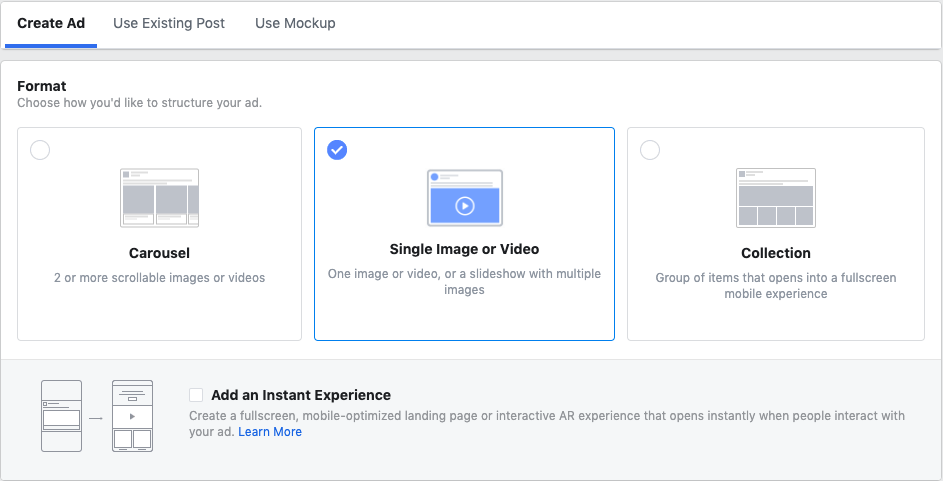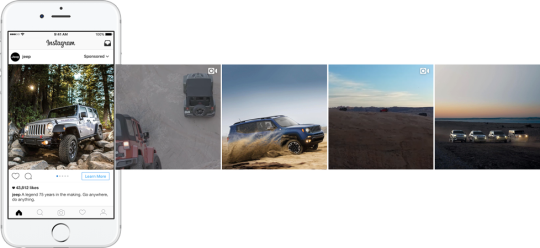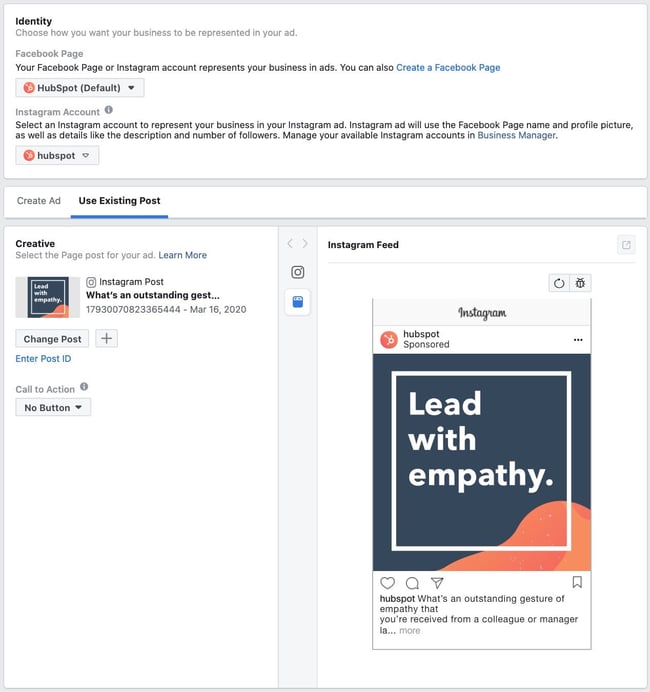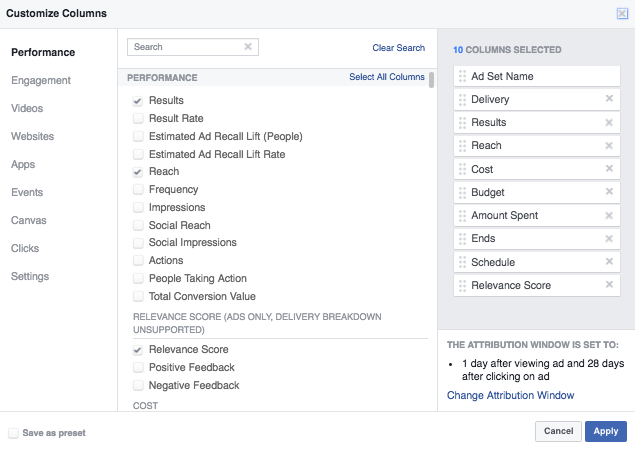Let’s continue with the three last steps to complete your advertising on Instagram.
6. Curate your ad creativity.
This is where your creativity comes in. Here you will determine what you need your ad to look like, which will depend on your original objective, of course.
On Instagram, you could choose several options for your ad:
Single photo or video, carousel, or collection.
Up to 5 photos or videos for the viewer to scroll through, at no extra cost.
When you choose your advert type, click on it and you will be prompted to browse and add your imagery, whether that be photos or a video.
For any advert type, the Fb adverts platform recommends you don’t add more than 20% of text. Previously, an advert with over 20% of text wouldn’t even be approved to deliver, however, it has recently changed to more of a suggestion than anything.
There are some requirements for Instagram advert imagery:
File Type
- .jpeg
- .png
Text/Caption
- Recommended: 125 characters
- Maximum: 2,200 characters
Square Photo or Video advert
- Recommended Photo Size: 1080 x 1080 pixels
- Minimum Resolution Accepted: 600 x 600 pixels
- Image Aspect Ratio: 1:1
Landscape Image or Video advert
- Recommended Image Size: 1200 x 628 pixels
- Minimum Resolution Accepted: 600 x 600 pixels
- Image Aspect Ratio: 1:1
7. Build your page links.
This step is to create your page and set up links. Choose the Fb Page of the account you need your ads to come from, even if you aren’t planning on working them on Fb. (Note: In case you’ve made it this far in the Ads Manager, you’re already logged into a Fb account.)
But because our intent is to run adverts on Instagram, you have to sync your Instagram account to your Fb advert account. To do that, choose “Add Account”.
If you or your business don’t have an Instagram account, you could still use advertising on Instagram — they’ll just come from your Fb Page instead. In other words, your Fb Page name and profile image can be used to represent your business within your advert as it runs on Instagram.
Next is a vital step: putting in the website URL to which you’re trying to drive more traffic. When you’re utilizing marketing automation software, remember to create a unique tracking URL with UTM parameters for this to make sure that you can keep track of traffic and conversions from this advert.
Then, you need to add a headline. This isn’t usually displayed to viewers of your advert on Instagram, but it’s always a great idea to finish it just in case. Enter a brief headline describing where people will visit.
Add a caption after making a headline.
You can make a caption with up to 2,200 characters — however, you don’t need to use all of them. Fb recommends you keep your caption under 125 characters, which is the amount that’s displayed without needing to click “more.”
Choose a Call-to-Action.
You could choose some different options for your CTA button that depends on what the page you’re taking users to looks like. You could select to have no button, or choose any of the following:
- Learn More
- Apply Now
- Book Now
- Contact Us
- Download
- Hope Now
- Sign Up
- Watch More
For our sake, we will stick with “Learn More,” as we’re just driving users to our website.
When your photo is uploaded and your text is set, take a look at the preview of your campaign to ensure everything is alright.
At this point, you will have the option to edit the “Advanced Options,” however, only if you want. The options include adding tags, changing your display link, entering URL parameters, setting up sponsors, and opting in or out of pixel tracking.
Then, you are ready to place the advert! Click on the green button to confirm. Yay, your advert will be delivered to the world.
8. Report on the performance.
Once your campaign is up and running on Instagram, it’s vital to track how they’re doing. You could go back in and tweak most aspects of the advert, so when you catch a mistake you made or your photo isn’t doing as well as you’d want, you could go in and alter these things.
You could track the results of your campaign in two places:
- The Fb Ads Manager
- Your marketing software
With the Ads Manager:
There is a sophisticated and extensive dashboard that gives you an overview of all your campaigns. Without customizing any settings, you will see data on reach, cost per result, and amount spent.
In the top right corner, you will find a button that is “Columns: Performance.” When you click the drop-down menu, an option to customize columns appears, which lets you select the specific data you wish to see. There’s data ranging from CPC or CTR, to issues much more particular like “Adds to Cart” for eCommerce stores.
There are some categories that the available metrics fall into:
- Performance (reach, results, frequency,…)
- Engagement (likes, comments, shares,…)
- Videos (video views, the average percent of video viewed,…)
- Website (checkouts, payment details, adds to cart,…)
- Apps (installs, engagement, cost per app engagement,…)
- Events (event responses, cost per event response,…)
- Clicks (unique clicks, social clicks, CTR, CPC)
- Settings (begin date, finish date, advert set name, delivery, bit, ad ID, and objective)
With your marketing software:
With so much data to look at, it can be simple to lose sight of the big photo. To actually track your success, make the most of your marketing software and the UTM codes you used in your adverts to track your ads’ full-funnel effectiveness.
Looking at the particular tracking codes via the software will allow you to keep track of how many leads (or better yet, customers) you actually generated via your advertising on Instagram. This ROI data can then be used to show other campaigns down the road.
When your advert launches and you begin getting traffic and conversions to your website, you will be able to simply measure how many visits, contacts, and clients you’re generating.
With over 1 billion monthly users, we can’t deny Instagram’s power and reach. Actually, it becomes the go-to place for businesses to interact with their audience. However, to get the most bang for your buck, it is important to set up your advert campaigns correctly — and optimize them even after you click “Publish” your advertising on Instagram.






